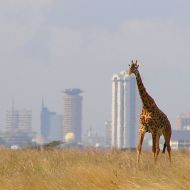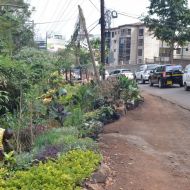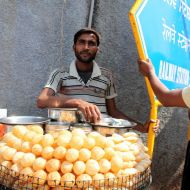Children Fight for a Space to Play in an Overcrowded City
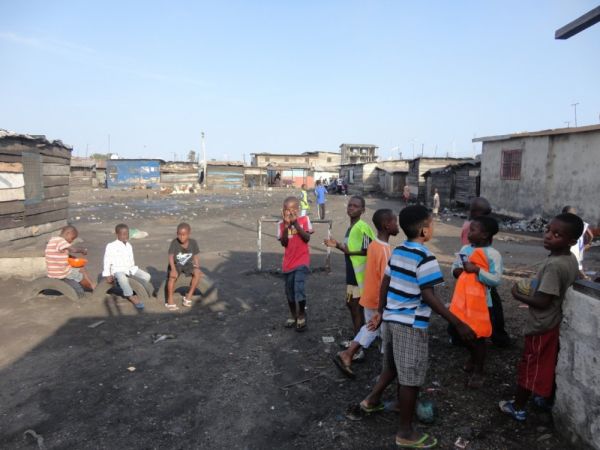
Children play near the Agogbloshie football field.
“Michael Essien played here,” Kofi Awia says. “In 1995, maybe.” We’re sitting in a sort of clubhouse – a bit of roofing and a couple of benches – looking out at Agogbloshie’s football pitch. Two sets of rusty goalposts stand at either end of a muddy open square between the small wooden structures that house the community. The water standing dully in the middle is swarming with mosquito larvae, bubbling, a strange greenish color. Bits of trash line the place, washed down from the market. It’s hard to believe that one of Africa’s most expensive football players once practiced here.
Awia, 29, is one of the leaders of a small group of young people who are trying to keep play alive in Agogbloshie. When I come to photograph their playing field, they rush to gather the local youth football team – 18 players, more or less, of all ages – who quickly crowd together for a group photo. “We are trying to form a community team,” Awia says.
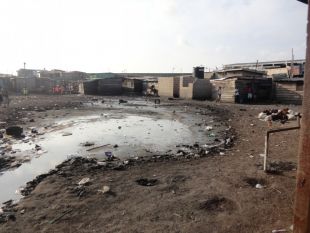
The field fills with stagnant water whenever it rains.
The field is completely unusable during the rainy season, which extends from April to October – incidentally, the time when temperatures are generally mild, making outdoor play more feasible. “We play football,” Awia says. “And the kids play ampe. This is the recreation center for the community. We use it to do everything. When we have a community forum, this is the place we use to do it.”
We survey the mud. Most of the standing water is run-off from the markets that make up Makola. “We have no gutters,” says Sammy, a member of the Ghana Federation for the Urban Poor and the kind of in-the-trenches community leader I’ve often met in Accra’s so-called slums, “so the water finds its own way.” In a part of town where land is highly coveted, it is remarkable that the space exists at all; clearly the community sees its recreation space as a significant priority. But the issue of drainage remains unresolved for the same reason. Houses have been built over the planned drainage ways, making progress difficult.
In Accra’s poorest neighborhoods, you’ll find variations on this scene. The dusty or muddy fields that do exist – often on school grounds – are in high demand, and playgrounds are nearly unheard of. Open areas are always threatened by the need for more space for markets and shelter. And all over the city, richer recreational spaces for both children and adults are hard to find and, where they do exist, are often inaccessible, behind walls, available only for a fee.
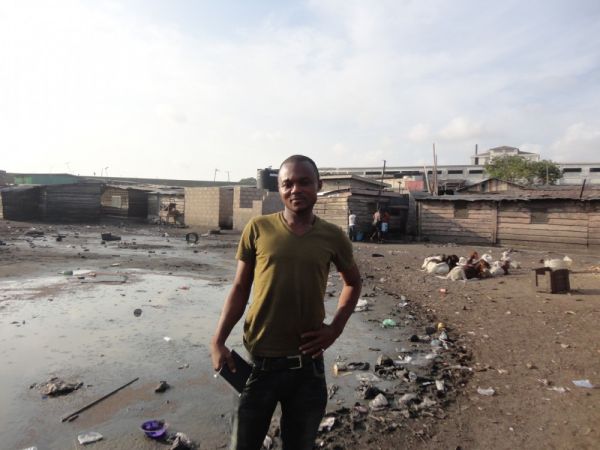
Kofi Awia is trying to create space for children to play in the community.
Children, of course, are incredibly versatile, and their will to play can come out in some pretty inventive ways. Streets become football pitches. Uncompleted buildings become playgrounds and venues for hide-and-seek. The spaces between houses become the winding pathways for games of chase. But these spaces are not always particularly safe, nor do they allow children and young adults to fully develop their talents for organized games such as football. Awia told me that now, the Agogbloshie football team must go to nearby communities where there are less-sodden fields, and vie for space with other teams wanting to practice.
Public recreational spaces – parks, fields, playgrounds – have been shown in study after study to have economic, physical and mental benefits, particularly for children. And for a young country still experiencing the growing pains of democracy, public spaces can provide a range of social benefits, offering a forum and gathering place for discussion. And yet the recreation spaces that do exist in Accra remain either informal and inadequate, or private and inaccessible.
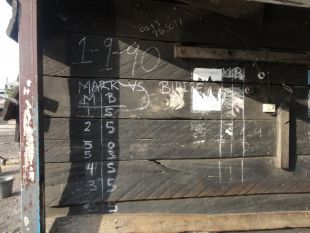
The scoreboard.
One visionary woman who saw the benefit of public leisure spaces was Efua Sutherland, a Ghanaian playwright and children’s author. She documented children’s play activities in the 1970s and ’80s in a beautiful rare book, Playtime in Africa. And she left her mark on Accra by masterminding the construction of a beautiful children’s park near the center of the city, now called the Efua Sutherland Children’s Park. Unfortunately, that legacy, has suffered from neglect and is often closed up behind its walls, its playground equipment in disrepair, a children’s train fallen apart.
But the Mmofra Foundation, an organization Sutherland set up, and now run by her children, with her daughter Amowi Phillips at the helm, is looking to revitalize her vision. Last year, they began the planning of a children’s play space to be built in Dzorwulu. In an article about that event, Phillips was quoted as saying, “An online search for a children’s parks or museums yields very little between Cairo and Cape Town. Without environments where children can imagine a better future, dependency can really become entrenched.”
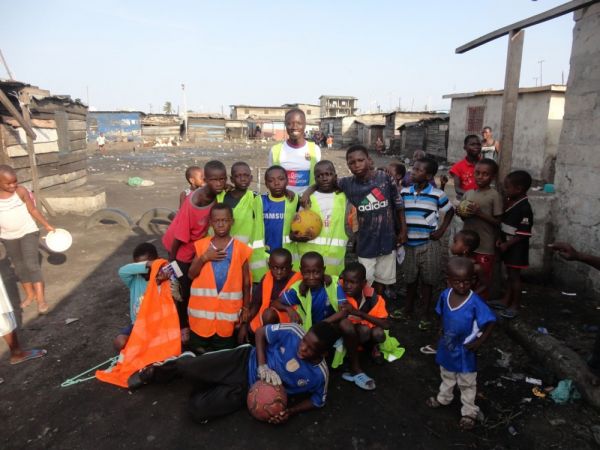
The Agogbloshie football team poses for a photo.
The Mmofra Foundation’s project could be a model for public space development in Accra as a whole. But these kinds of projects require fiscal support and commitment. In the meantime, with partnerships between city and community leaders, upgrading measures could be taken in communities like Agogbloshie, which needs proper drainage in order to have a simple and functional football field. Awia would love some support, he says, but “[it is] ourselves, the leaders. No one can help us unless we help ourselves. We have to help the community so the community will stand.”

